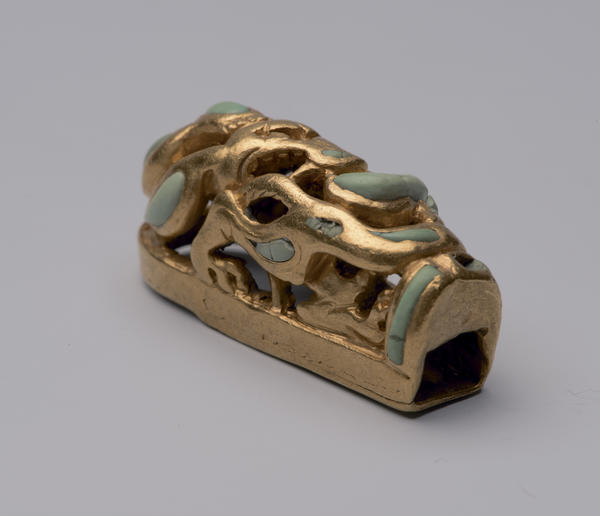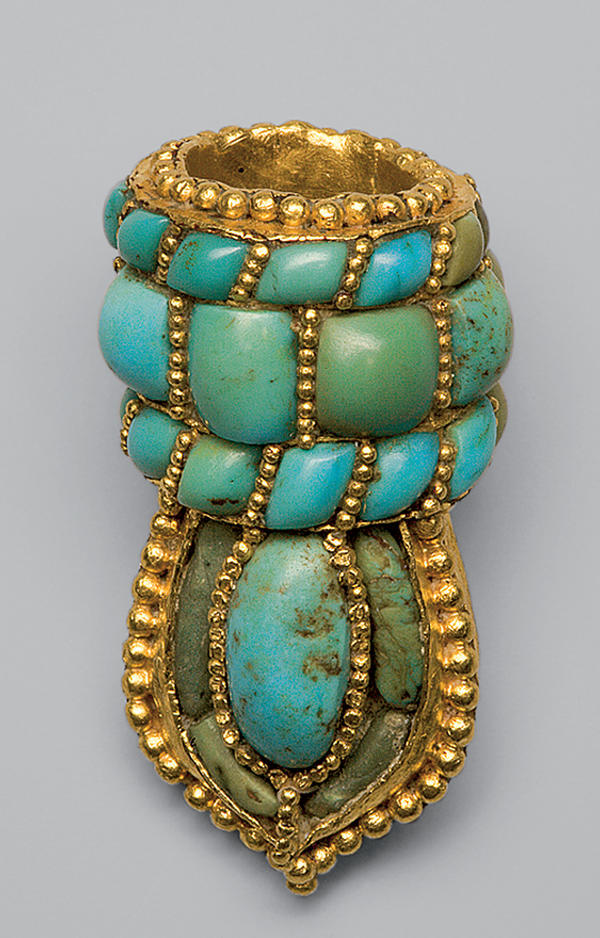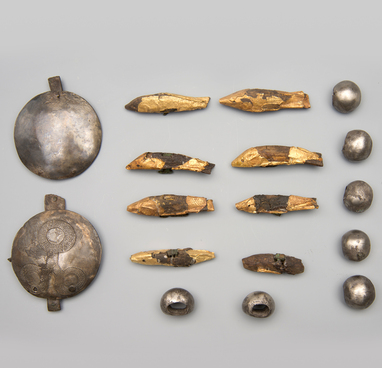The details of a stacking belt such as openwork stripes, belt tips and plates were found in the Dachi burial-ground which is considered to be the richest burial complex of the Sarmatian time in the Rostov region. The belt items and a short Sarmatian sword were hidden in a cache.
In total, over 15,000 stripes were found there; 10,860 stripes were used by scientists for reconstruction of the saddlecloth represented in the exposition of the Azov Historical-Archaeological and Paleontological Museum-Reserve. The square, openwork plates were located next to the waist decorations in the cache. Therefore, it is highly likely that they are also waist decorations. Such stacked belts decorated with metal buckles appeared in the Sarmatian time. The belt base was probably made of leather which has not preserved.
Not only the stripes but also the other items found in the cache are delicately made. The master used embossing to create the stripes having small holes for sewing. The burrs around the holes are neatly filed off.
In total, over 15,000 stripes were found there; 10,860 stripes were used by scientists for reconstruction of the saddlecloth represented in the exposition of the Azov Historical-Archaeological and Paleontological Museum-Reserve. The square, openwork plates were located next to the waist decorations in the cache. Therefore, it is highly likely that they are also waist decorations. Such stacked belts decorated with metal buckles appeared in the Sarmatian time. The belt base was probably made of leather which has not preserved.
Not only the stripes but also the other items found in the cache are delicately made. The master used embossing to create the stripes having small holes for sewing. The burrs around the holes are neatly filed off.






